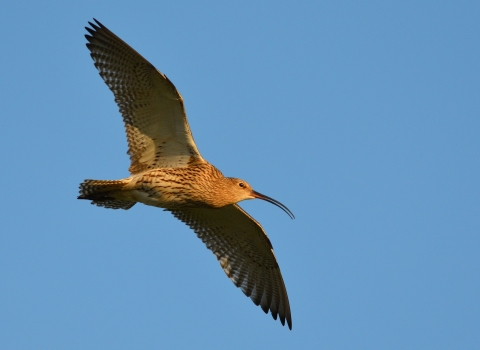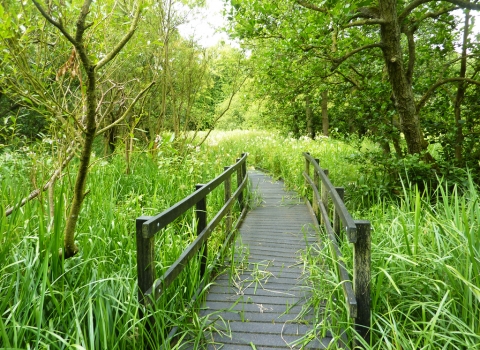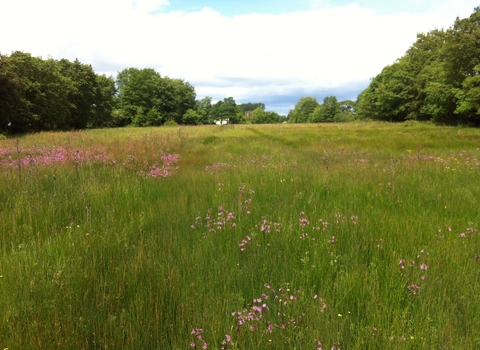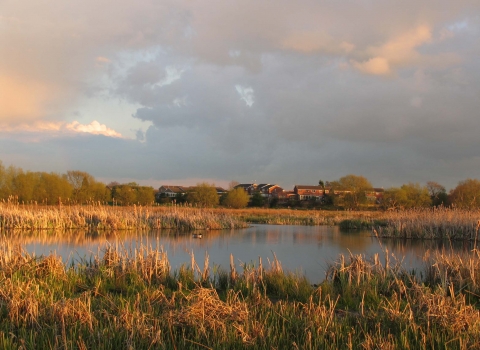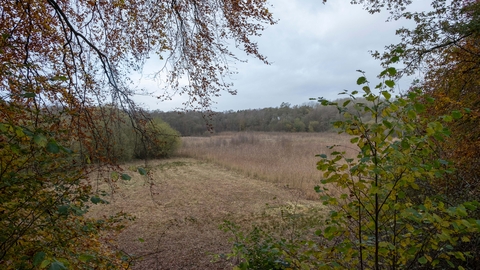
Loynton Moss by Christine Harding
Loynton Moss
Location
Know before you go
Dogs
Please keep your dog close to you, preferably on a lead
When to visit
Opening times
Open at all timesBest time to visit
January to May, September to OctoberAbout the reserve
Highlights
- The reserve is a rich, diverse wetland teeming with life. Numerous insect species utilise this distinctive habitat attracting many bird species such as reed bunting.
- Look out across the area of fen, which is literally a thin floating raft of vegetation over water dominated by tall reed species.
- In the spring the drier wooded areas are vibrant with the colour of bluebells and stitchwort. Listen out for skylarks and look up to see buzzards high in the sky.
Post glacial depression
Loynton Moss is a post glacial landscape. As the ice age came to an end, huge blocks of ice broke from retreating glaciers gouging a depression known as a kettle hole. When the ice blocks eventually melted, this depression was filled with water to form a mere (lake) that extended more than 100 acres.
Hundreds of years of natural processes and human activity have seen dramatic changes to the landscape. The lake has disappeared to form an area of Moss, which is a regional term for peaty, boggy land.
Bugs, bugs, bugs!
The wetland habitats of the Moss are home to a variety of rare insects. Some of the more notable moths recorded have wonderful names such as dentated pug, small yellow wave and round winged muslin. Look out for the distinctive brimstone butterfly, which can often be seen close to its food plant - alder buckthorn. Other common species of butterfly you are likely to see include orange tip, speckled wood and holly blue.
Visitors might not welcome the attention of the Moss’s other family of insects - mosquitos. During the summer months these insects are on the wing deterring all but the most determined visitor from entering the darker, wetter areas of the Moss.
Not just bugs
The diverse range of insects attracts many breeding bird species each summer including willow warbler, reed warbler and reed bunting.
Beyond the network of paths, the largely inaccessible areas of reedbed and wet woodland are home to a rich flora including uncommon plants such as marsh cinquefoil, cowbane and elongated sedge. The area of alder carr is a wonderful stand of wet woodland and when flooded resembles a miniature Everglades swamp.
The areas of grassland were aquired by the Trust in 2000 and now form the largest part of the nature reserve. They were once important wetland, but were unfortunately drained for agriculture in 1970. The ongoing restoration of these fields has seen brown hare attracted back to the Moss. In the summer the grasslands are buzzing with insects feeding on wildflowers such as yellow rattle, birds foot trefoil and knapweed.
Taking care
The overall aim at Loynton Moss is to restore ground water levels to maintain the range of wetland habitats and the key species that they support. Birch trees have been felled in certain areas as this species can consume huge amounts of water during the summer months and cause the Moss to dry out. Ditches have been dammed and land drains broken with the aim of restoring water levels in the SSSI (Site of Special Scientific Interest) and re-wetting lower lying areas of grassland.
Raising water levels and grazing with low numbers of cattle has helped to create areas of habitat that may well attract wading birds like curlew and snipe in the future.
Ash dieback
Sadly Ash dieback is affecting many of our nature reserves in Staffordshire. We have already had to carry out some felling in some of our woodlands and over the next few years we will have to continue to do so. This includes felling at Loynton Moss and an area off woodland will be closed to the public while this takes please. Please head to our ash dieback page for a map and more information.







